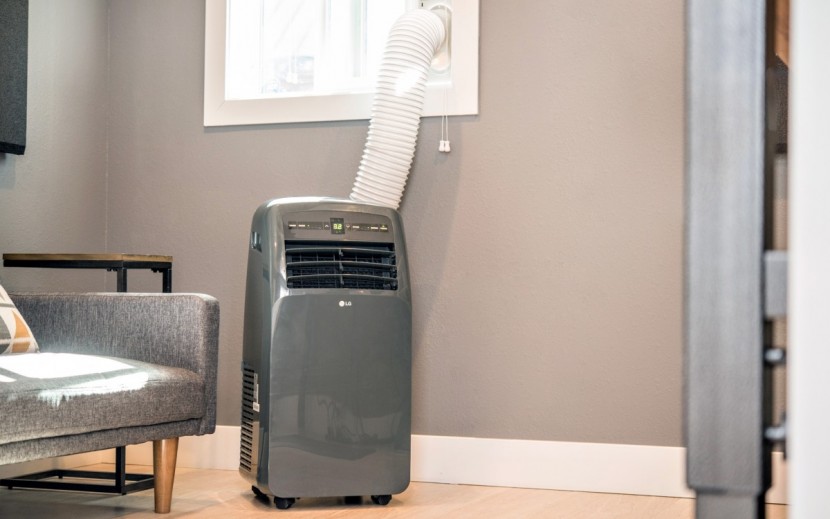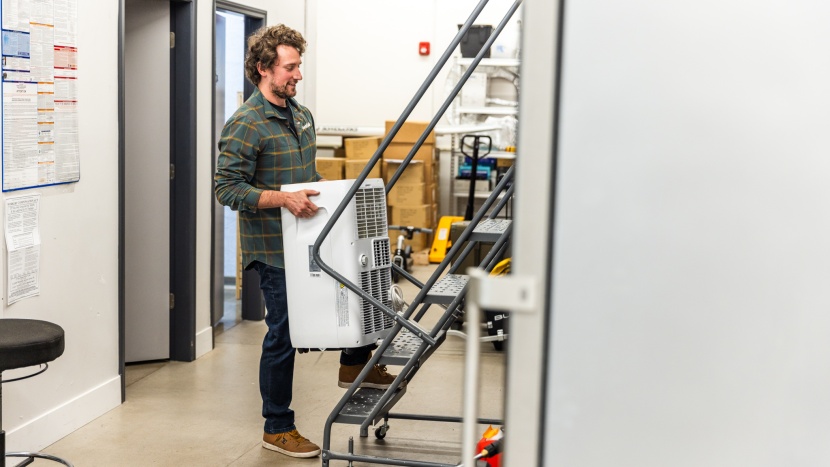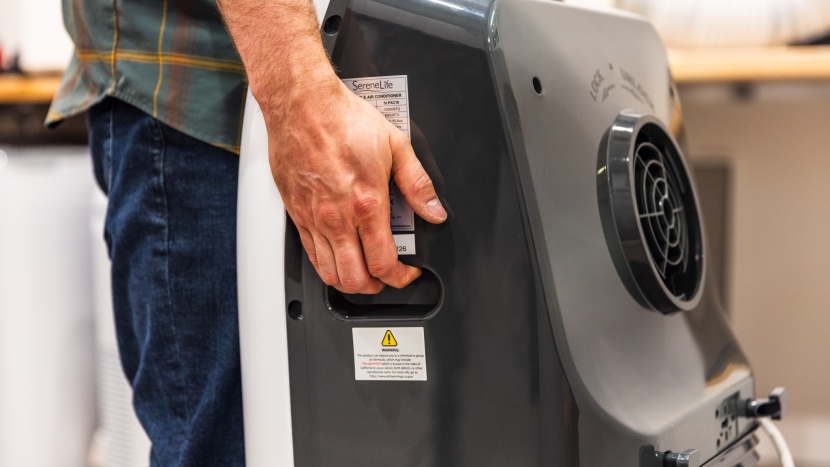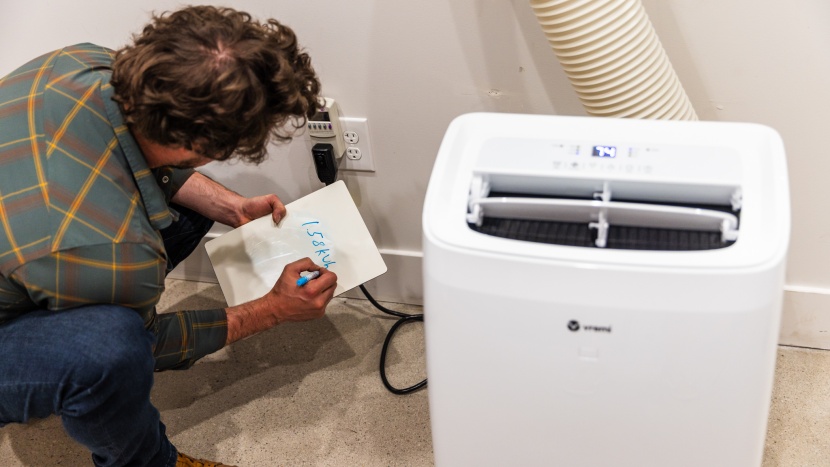To test for the best portable air conditioners, we waited for summer to roll around, then purchased a group of the most compelling units to pit against each other across five different rating metrics. We converted our warehouse into a sweltering test environment and then brought out data loggers, thermometers, watt meters, sound monitors, scales, and timers to gather the real-world performance data we used to suss out the best portable air conditioners on the market today. If you are interested in how specific products perform, consult our comprehensive portable air conditioner review or head on over to our buying advice guide for more background on these products and what to check for when shopping for a new one. Below, we go in-depth on how each test was conducted for the portable ACs in our review.
Cooling
For our cooling metric, we scored each AC on how much it could drop the temperature of a hot room in 60 minutes. As this is the primary function of these home appliances, it constitutes 35% of the total score for each product. We only tested one unit each day, ensuring that the outside temperature and amount of sunlight entering the room were comparable for each test. Ideally, we were looking for direct sunlight and an outside temperature in the mid-80s.
To start, we picked out a small room in our test facility and then heated it as much as we could with a small army of space heaters. We got the temperature as high as we could, then gave it a small amount of time to settle to a stable temperature so we didn't artificially inflate the cooling performance of each product. We then ran each product on its highest cooling mode for an hour, taking the ambient room temperature with data loggers placed around the room. Each unit was scored on its ability to quickly lower the temperature over an hour.
Portability and Installation
A key feature of these products is the ability to move them somewhat easily to the rooms where you most need cooling or the ability to store them during the colder months. Thus, our portability and installation metric accounts for 25% of the total score for each product.
These products have wheels, so we started by evaluating and judging how easy it is to roll each of these appliances around on various surfaces, including low and high-pile carpets. We looked at both the rolling resistance and maneuverability of each one to score them, though we did omit carrying the hose and window insert while testing this.
Next, we weighed each unit and evaluated the ergonomics of the handle to judge how hard it is to carry each of these models — a must if you live in a multi-level dwelling and want to move the AC between floors.
Finally, we looked at installation, evaluating the difficulty of moving the window insert between different windows. This included the time it took to remove and install it, how difficult those processes were, and any tools required to complete them.
Noise
Cooling down your bedroom to make it easier to sleep comfortably is relatively useless if the cooling unit is so noisy that it makes it impossible to sleep or if you need to shout over the machine's roar to communicate when cooling down common spaces. Our noise metric accounts for 20% of the total score and is based on two separate tests. First, we measured the objective noise with our SPL meter at about four feet away, ensuring that rushing air wasn't passing over the mic to distort the sound. We did this test on each AC unit's highest fan setting and awarded the most points to the quietest units.
We then conducted a more subjective test and listened to the air conditioners back to back on their highest fan settings, with our ears pretty close to the vents but out of the path of the moving air. This was a more practical real-world test where we noticed some units had more compressor noise and others more fan noise. We could also identify irritating tones, like high-pitched whines or droning, that the SPL meter wouldn't necessarily capture.
Energy Consumption
This metric makes up 15% of each unit's score. This is where we do testing to forecast how much energy each AC consumes running for 12 hours a day. We then multiply that figure over time to calculate kWh consumption and average electricity costs. Having a cool room on a hot summer day is great, but it's less great if it blows a huge hole in your budget with an outrageous power bill.
We conducted our test using a wattmeter to measure the actual power consumption of each AC unit with their compressors running and fans on high for 60 minutes with ambient conditions starting at around 82 Fahrenheit. Once we had that data, we multiplied the kWh over time to get an idea of how much each unit costs to run.
These figures are a projection and won't apply equally to everyone, as we all have preferences on indoor temperature, varying local electricity prices, and live in different climates. However, the ranking of these products will be relevant, even though our estimated annual power consumption and cost may vary.
Convenience
The convenience metric brings home the final 5% of the total score. This is where we weigh each unit's extra features like airflow adjustability, the settings display, modes, child locks, remotes, timers, Wi-Fi, apps, and other smart features. Units that implement more of these features or that do so most thoughtfully or effectively score higher.
Remote controls are nice, but mobile app connectivity is particularly great because it brings so many additional features, like advanced programming, reporting, smart diagnosis, and even the capability to turn the AC on or off based on how far away from home you are.
Conclusion
Hopefully, this guide has clarified how we sorted through the dozens of different air conditioners on the market to pick the most promising and what went into selecting our award winners. If you want to read more about the AC units we tested or are struggling to choose the perfect model for your situation, check out our comprehensive review of the best portable ACs and our Buying Advice article. If you're in the market for a window unit that takes up less space, see our review of the best window air conditioners. Also see our best tower fan review for more products that can cool smaller spaces.








